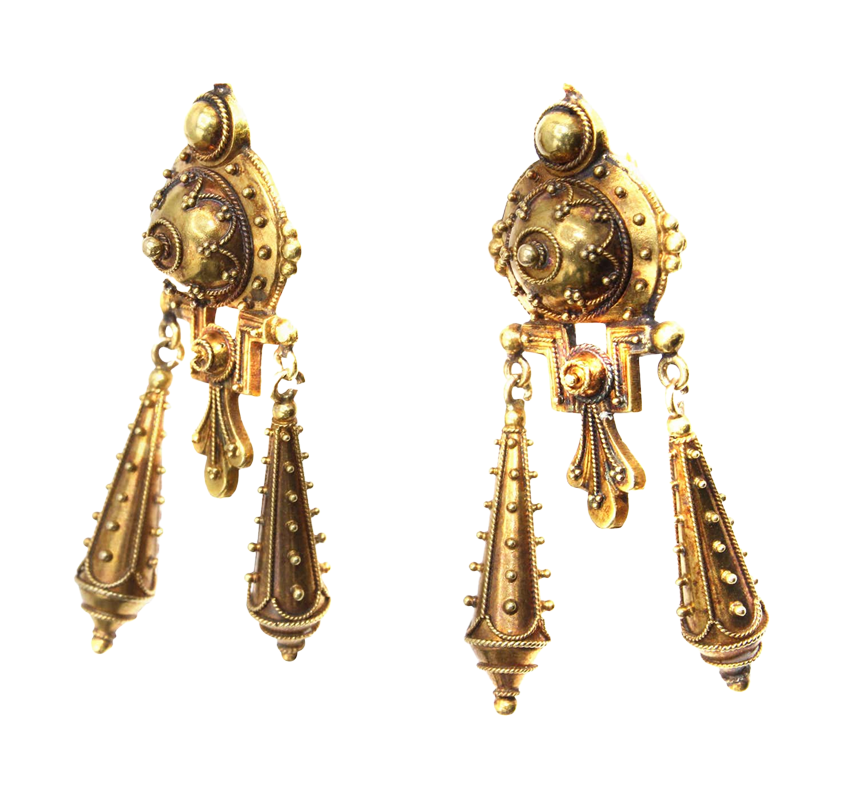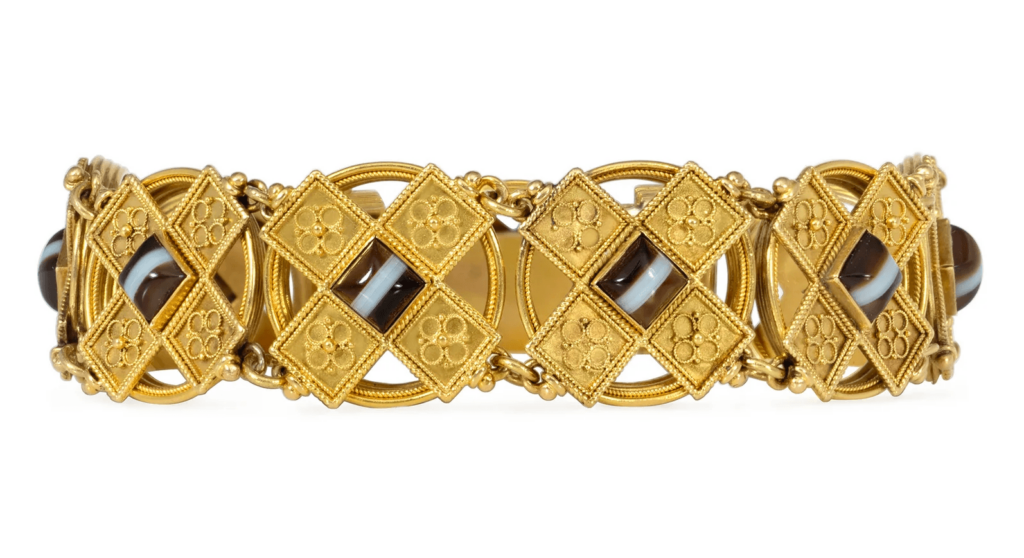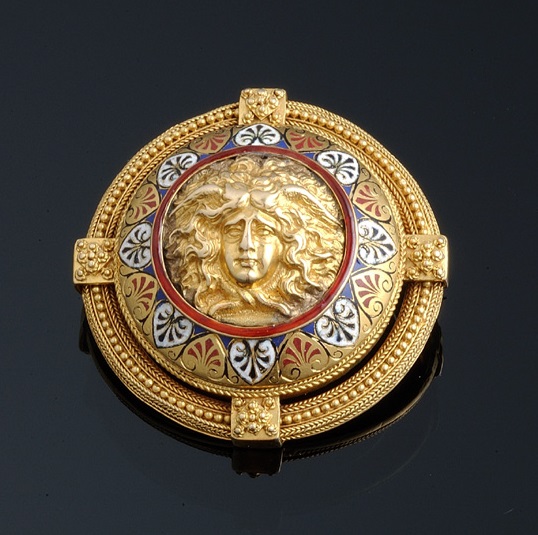Jewelry designers are inspired to create by what happens in the world around them and during the 1800s archeological finds were a huge influence. It’s important to note that archeology as the scientific study that we know today started in the early 1800s. It grew out of the previous centuries lust for treasure hunting and antiquarianism, which was an interest in the past. As archeology developed in the 19th century, some important discoveries were made and people became fascinated with what was being found, including sumptuous gold jewelry, which in turn sparked a desire for those styles, which jewelers replicated. One of the most important archeological revival movements of the Victorian era was inspired by the finds in Italy from the Etruscan civilization.
Who Were the Etruscans
The Etruscans were a very refined and wealthy society with sophisticated art and architecture. They inhabited what is now the Tuscany area of Italy, somewhere between the 8th and 2nd century BCE, with some historians citing slightly different dates.
Ritual was a very big part of Etruscan culture and they buried their dead with all of their belongings. When archeologists uncovered these tombs they found, among other items, a treasure trove of jewelry. The jewelry was elaborate and highly ornamental. Victorians loved anything historic and they were fascinated by the new science of archeology and the ornate jewelry coming out of the archeological digs. It wasn’t long before wealthy Victorians began commissioning jewelers to make replicas of the jewelry that was being found.
Characteristics of Etruscan Style

What made Etruscan jewelry so desirable? There were four elements that defined the Etruscan style:
Granulation, which is a technique where teeny gold spheres are attached to a plain gold surface to create a pattern, or frame, on a piece of jewelry.
Filigree metalwork which was created by twisting fine gold wire into a pattern on the surface of a piece of jewelry. Filigree can also be openwork.
Etruscans seemed to love color and that came through in their jewelry through the use of colored gemstones including sapphire, emerald and garnet. They also used faience, which are colored ceramic objects. In revival jewelry, enamel was sometimes used to add color.
Last, the gold had a matte finish. In the revival jewelry the matte finish, was also called a soft finish. To get the look, a technique known as “blooming” was used. A piece of gold jewelry was dipped into an acid bath which burned off all the alloy metals from the surface of the piece, leaving an outer layer of thin gold that had a soft matte sheen, or “bloom”.
Castellani and the Etruscan Revival

Famed 19th century Italian goldsmith Fortunato Pio Castellani became a leader in the Etruscan revival jewelry movement and is widely credited with resurrecting the techniques used in their jewelry making. He allegedly became interested in Etruscan jewelry after attending a lecture on ancient jewelry styles in 1826. He began making his revival jewelry in the 1830s and in 1836 he was subsequently invited to visit the newly discovered Etruscan tombs to view the jewelry.
The gold work in Etruscan jewelry was very challenging to recreate and Castellani was working on ways to do just that, when by chance he encountered some artisans in an Apennine mountain town who had learned ancient jewelry making techniques that were passed through the generations. He hired them to train the artisans in his workshop. Castellani became so renowned for working in the Etruscan style that tourists stopped by his workshops in Rome to view his spectacular gold creations. Etruscan revival jewelry was most popular between the late 1850s until it began to fall out of favor in the mid 1880s.
Etruscan Revival jewelry showcases gold work in a way that we don’t usually see now because the techniques are exacting and time consuming making them too expensive to recreate today. These lovely antique pieces, many of which are still very wearable and chic, highlight the goldsmith’s art to perfection, allowing us a glimpse not only into the art and culture of the Victorian era, but also into the ancient world of jewelry making.
Top of Page: Victorian sardonyx cameo and 18-karat gold Etruscan style bracelet, circa 1870, courtesy Spicer Warin (@spicer_warin).
Authored by Amber Michelle

